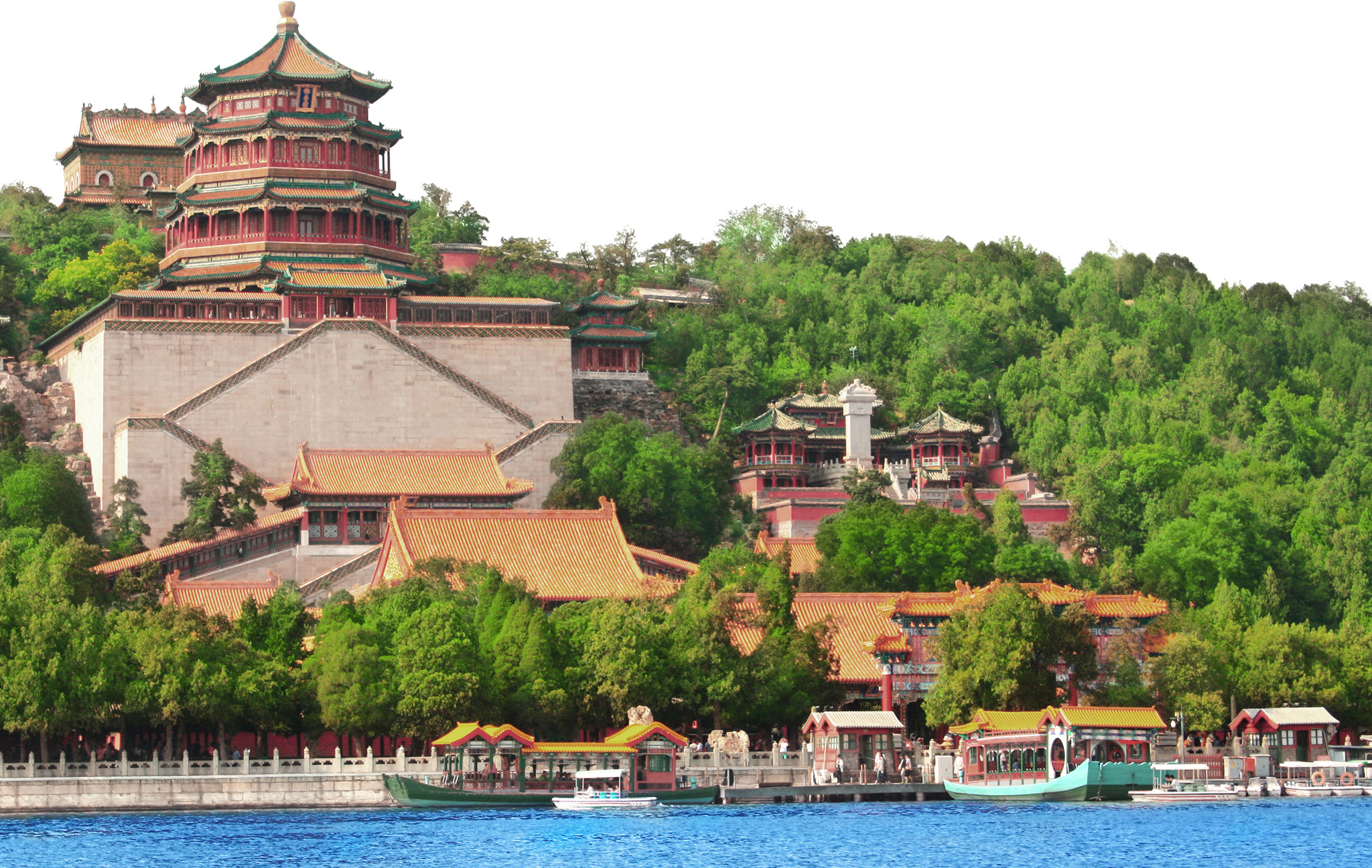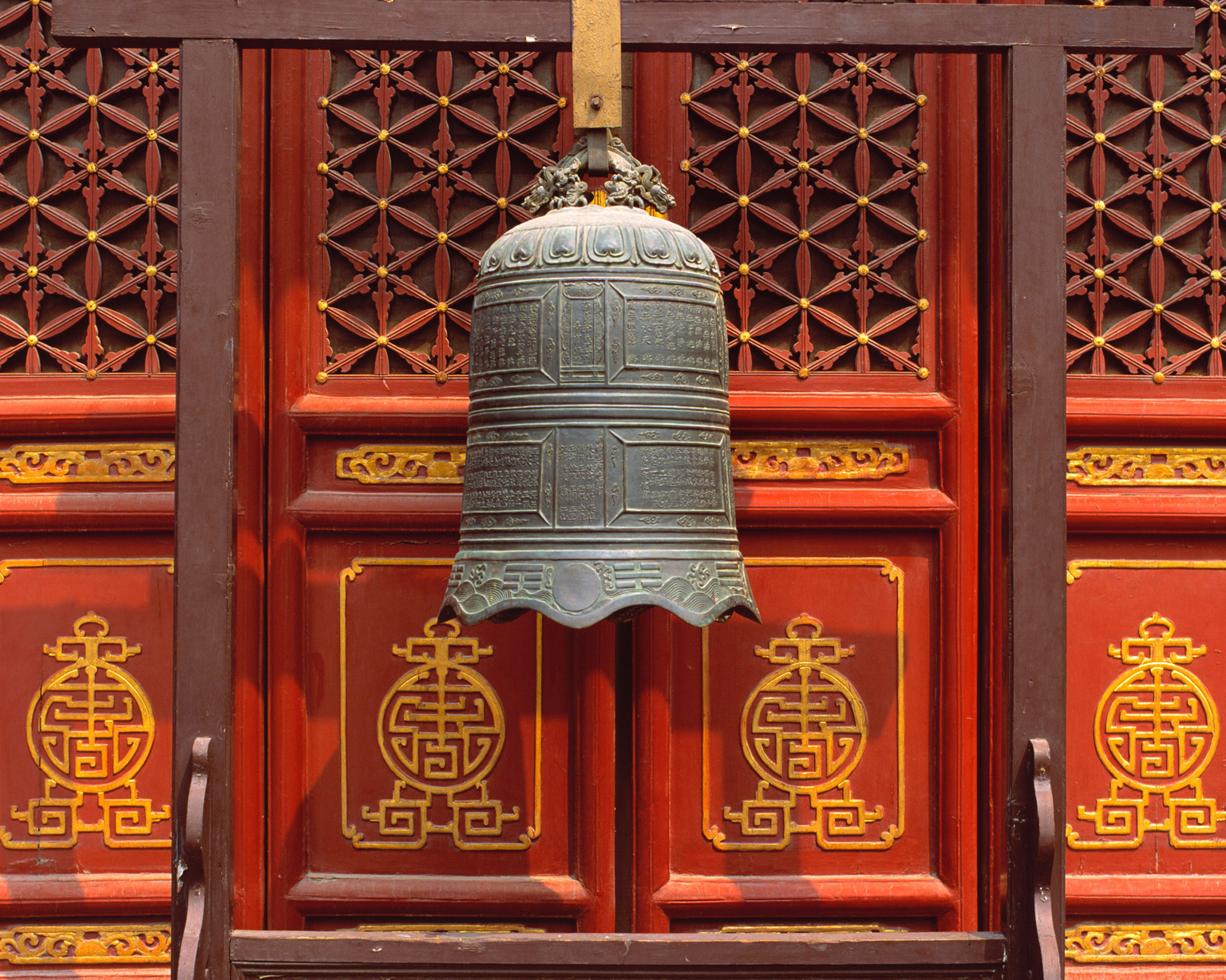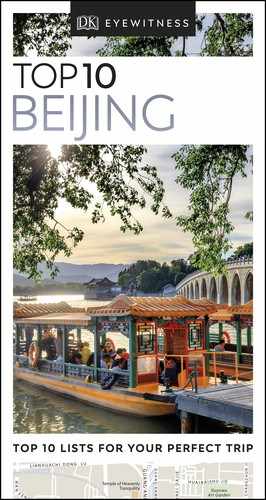GREATER BEIJING
Beijing is vast. Although you could spend all your time without ever straying too far from the area around Tian’an Men Square, you would be missing out on a lot. Sights in the northwest of the city include the unmissable Summer Palace, the intoxicating hillside Xiang Shan Park and the haunting ruins of the Yuanming Yuan, or Old Summer Palace. It’s worth trying to squeeze all three into one day’s sightseeing. For fans of contemporary urban culture, the 798 Art District in Beijing’s northeast is a must, and you can drop in on the markets and bars around Sanlitun on the way back into town.

1. Summer Palace
It’s only a short bus or taxi ride from Bagou subway station to the unmissable Summer Palace. The grounds are arranged as a microcosm of nature, with hills and water complemented by bridges, temples, and walkways. It manages to be both fanciful and harmonious at the same time.

The lakeside Summer Palace
2. Yuanming Yuan (Old Summer Palace)
![]() 28 Qinghua Xi Lu • 6262 8501 • Subway: Yuanming Yuan Park • Open 7am–7pm daily (Sep & Oct: to 6:30pm; Nov–Mar: to 5:30pm) • Adm • www.yuanmingyuanpark.cn
28 Qinghua Xi Lu • 6262 8501 • Subway: Yuanming Yuan Park • Open 7am–7pm daily (Sep & Oct: to 6:30pm; Nov–Mar: to 5:30pm) • Adm • www.yuanmingyuanpark.cn
The palace’s name can be translated as “Garden of Perfect Brightness.” It was the largest and most elaborate of all the summer palaces of the Qing era. It once contained private imperial residences, pleasure pavilions, a vast imperial ancestral shrine, Buddhist temples, and canals and lakes. The Qianlong emperor even added a group of European-style palaces designed by Jesuit missionary-artists serving in the Qing court. Today, only graceful ruins remain, after the ravaging effects of the Second Opium War (1856–60). A museum displays images and models of the place as it was.

Ruins at Yuanming Yuan (Old Summer Palace)
3. Xiang Shan Park
![]() Wofosi Lu • 6259 1264 • Bus: 331 from Summer Palace or 634 from Xizhi Men • Open 6am–6:30pm daily (Jul & Aug: to 7pm; mid-Nov–Mar: to 6pm) • Adm • www.xiangshanpark.com
Wofosi Lu • 6259 1264 • Bus: 331 from Summer Palace or 634 from Xizhi Men • Open 6am–6:30pm daily (Jul & Aug: to 7pm; mid-Nov–Mar: to 6pm) • Adm • www.xiangshanpark.com
The wooded parkland area, also known as Fragrant Hills Park, is 2 miles (3 km) west of the Summer Palace. It offers fine views from Incense Burner Peak, which is accessible by a chairlift (for a fee). Close to the park’s main gate is the Azure Clouds Temple (Biyun Si), guarded by the menacing deities Heng and Ha in the Mountain Gate Hall. A series of halls leads to the Sun Yat Sen Memorial Hall, where the revolutionary leader’s coffin was stored in 1925, before being taken to his final resting place in Nanjing.
4. Great Bell Temple (Dazhong Temple)
![]() 31A Beisanhuan Xi Lu • 6255 0819 • Subway: Dazhongsi • Open 9am–4:30pm daily • Adm
31A Beisanhuan Xi Lu • 6255 0819 • Subway: Dazhongsi • Open 9am–4:30pm daily • Adm
This 18th-century temple follows a typical Buddhist plan, with a Heavenly Kings Hall, Main Hall, and a Guanyin Bodhisattva Hall. What distinguishes it, though, is the massive bell – (one of the world’s largest – housed in the rear tower. The bell was cast between 1403 and 1424, and has Buddhist sutras in Chinese and Sanskrit on its surface.

Ornate bell at the Great Bell Temple
5. 798 Art District
Although it’s called the 798 Art District, known locally as Da Shan Zi, Factory number 798 is only one of the several former industrial units taken over by artists and galleries. The 798 features many of Beijing’s best galleries, including UCCA and Pace.

Graffiti art on a wall in the 798 Art District
6. Beijing Botanical Gardens
![]() 6259 1283 • Bus: 331 from Summer Palace or 634 from Xizhi Men • Open 7am–5pm daily • Adm • www.beijingbg.com
6259 1283 • Bus: 331 from Summer Palace or 634 from Xizhi Men • Open 7am–5pm daily • Adm • www.beijingbg.com
About a mile (2 km) northeast of Xiang Shan Park lie these pretty gardens, containing some 3,000 plant species and pleasant walks. The garden’s Sleeping Buddha Temple (Wofo Si) is renowned for its magnificent 15-ft (5-m) bronze statue of a reclining Buddha. China’s last emperor, Pu Yi, ended his days here as a gardener.

Lily pond, Beijing Botanical Gardens
7. China National Film Museum
![]() 9 Nanying Road, Caochangdi Village, Chaoyang • 8435 5959 • Bus: 418 from Dong Zhi Men • Open 9am–4:30pm Tue–Sun (last adm 3:30pm) • www.cnfm.org.cn
9 Nanying Road, Caochangdi Village, Chaoyang • 8435 5959 • Bus: 418 from Dong Zhi Men • Open 9am–4:30pm Tue–Sun (last adm 3:30pm) • www.cnfm.org.cn
Reportedly the world’s largest, this film museum is housed in a glass-and-steel structure and features 20 exhibition halls, an IMAX theater, a digital projection theater, and several 35mm theaters. Over 100 years of Chinese cinema are represented by 1,500 films and 4,300 stills from the works of 450 film-makers.
8. National Aquatics Center (Water Cube)
This Olympic venue proves there is life after the Games – today, the Water Cube is a popular water park, and it is earmarked to host the 2022 Winter Games’ curling events. In this collaboration between Chinese and Australian architects, China drew from the classical mythology tradition of a square earth and round heaven, symbolized here by the angled building and the circular stadium. The Australians designed the bubbles, representing soap lather’s natural pattern.
9. Science and Technology Museum
![]() 1 Beisanhuan Zhong Lu • 6237 1177 • Subway: Olympic Park • Open 9:30am–5pm Tue–Sat • Adm • www.cstm.org.cn
1 Beisanhuan Zhong Lu • 6237 1177 • Subway: Olympic Park • Open 9:30am–5pm Tue–Sat • Adm • www.cstm.org.cn
Exhibits begin with ancient science, highlighting China’s “technological pre-eminence in history.” The technology comes up to date with Chinese space capsules, robots, and an Astro-vision Theater incorporating state-of-the-art cinematography.

Science and Technology Museum
10. National Olympic Stadium (Bird’s Nest)
Inspired by Chinese ceramics, the design of interlocking steel beams was initially supporting a retractable roof. This was later removed, but what remains is still a stunning structure. Since 2008, the Bird’s Nest has hosted everything from auto-racing and soccer matches to pop concerts and a winter carnival.
CHINA’S PEOPLES
China’s 1.41 billion population includes about 55 different ethnic minorities, each with their own languages and, in many cases, distinctive customs. Though rich in culture, and varied, together these ethnic minorities make up only eight percent of the population, with the main group, known as Han Chinese, accounting for the rest.
GREEN BEIJING

MORNING
Be at the East Gate (Dong Men) of the Summer Palace for 8:30am to beat both the heat (if you are visiting in summer) as well as the crowds. Make your way along the north shore of Kunming Lake via the Long Corridor and ascend Longevity Hill. Descend again to the Marble Boat and take a pleasure cruiser across the lake to South Lake Island. Cross back to the mainland via the supremely elegant Seventeen-Arch Bridge; from here it’s a short walk north to exit where you came in at the East Gate. In the car park, pick up a taxi and instruct the driver to take you to Xiang Shan Park, otherwise known as Fragrant Hills Park. Before you enter, Sculpting In Time is a café near the East Gate that does good salads, pastas, and pizza.
AFTERNOON
From the park’s East Gate, turn right for the Temple of Brilliance, built in 1780 and ransacked by Western troops in 1860 and 1900. Close by is the Liuli Pagoda, with bells hanging from its eaves that chime in the breeze. Continue north to pass between two small round lakes linked by a small hump-backed bridge – the whole known as the Spectacles Lakes. Beyond is a chairlift that takes you up to the top of the “Fragrant Hill.” Zigzag back down past many more pavilions to arrive at the Fragrant Hills Hotel, designed by Chinese-American architect I. M. Pei, best known for his glass pyramid at the Louvre in Paris and the Suzhou Museum near Shanghai.
